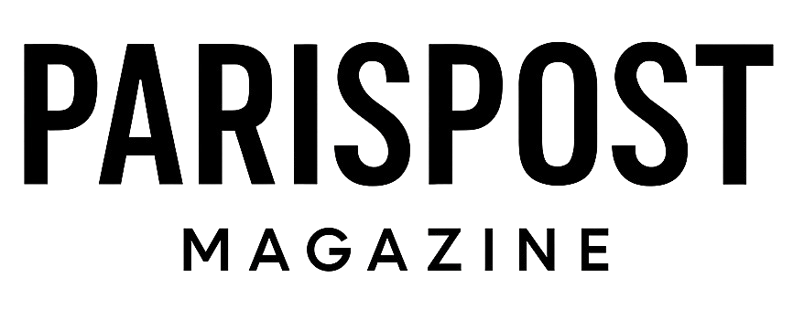Abstract: This course is designed in the context of increasing corruption and aims to develop students’ knowledge about corruption and its consequences. The course content is designed for use as a special topics course for graduate-level classes. It begins with an introduction to corruption, proceeds to the causes and consequences, then to anticorruption strategies and control measures, and finally concludes with case studies, practical applications, and challenges. This course outline highlights the causes, negative impacts, and solutions to its eradication, expressing the inner thoughts and outward actions, and provides a fresh perspective with clear vision and direction.
Introductory Input
Corruption is the dishonest/illegal abuse of public office or a position of power/influence for private/personal benefit. Common types of corruption include a range of activities such as bribery for routine services, financial fraud, policy distortion, institutional weaknesses, embezzlement, extortion, nepotism, cronyism, and influence peddling. Consequences of corruption include erosion of trust, economic harm, hindered economic development, increased inequality, and undermining democracy. It goes beyond public office to involve those in influential roles within corporations or other powerful groups. Private gain can also include non-financial benefits, such as increasing one's power, influence, or social standing, or benefits for a group like a political party or corporation. India was ranked 96th out of 108 countries in the Corruption Perception Index-2024. The challenges in India to grow and prosper in the right direction include weak enforcement of anti-corruption laws, opacity in political funding, pathways to organizational success, and regulatory loopholes.
A good practice approach, including a strong monitoring mechanism to track work done, firm regulatory action, departmental targets and mandates for the clean work roadmap, and adherence to standard operating procedures (SOPs), can be a game-changer. Public awareness campaigns and incorporating courses on ‘corruption and its control’ into the university curriculum can create a strong public demand for a clean workforce. A large section of citizens still supports clean work environment action, and it is necessary to pair it up with political will and total commitment to implement anti-corruption measures to look beyond short-term enforcement. Moreover, corruption cases are grossly under-reported in India and often supported by politicians, bureaucrats, police, and gangsters.
As government systems grow opaque, a shared framework of trust between the public and public servants is becoming even more vital. It is essential to change public perceptions of corruption by sharing scientific insights, values, priorities, choices, and consequences with the general public. A special investigation team (SIT), the enforcement directorate (ED), and the criminal investigation department (CID) must conduct an unbiased investigation of the serious/complex/sensitive crime cases on a fast-track basis in the best interest of the organization. It is essential to create a suitable work environment in the public sector undertakings (PSUs) and private sector firms (PSFs) to concentrate on their trajectory to capture the imagination of the entire nation and to emerge as a self-reliant country.
Corruption Concern in Public Departments
A deep-rooted decay within the administrative machinery at every stage in various departments and an overall decline in moral values are evident in citizens’ experience, creating a ‘parallel economy’ and ‘price tag’ culture. Some officials pay hefty prices for lucrative posts linked to real estate or enforcement. Low pay at entry-level jobs, structural flaws, political interference, shielding criminals, legal loopholes, and frequent reshuffles/transfers are some causes of a vicious cycle of corruption to sustain and a deep governance crisis. Transparency and accountability audit, institutional autonomy, strengthening Lokayukta, linking promotions to integrity records, sensitization programs, creating public awareness, advanced corruption detection, and stricter enforcement of anti-corruption laws can create a fear of consequences and result in smooth functioning for sustainable progress. Indian administration should stand the test of public scrutiny to maximize its great potential, follow the best practices, and be the best in our value systems and ethics. The government must ensure that the allocated funds reach the intended beneficiary. India needs a spirit of nationalism that exists during a war and a sense of community service, and following the integral path of goodwill to chase the vision of each department to spread our wings far beyond national borders. We emphasize the need for an educational approach in identifying and eliminating a culture of corruption to create a conducive work environment and make significant contributions to sustainable growth in society.
A course on ‘Corruption and Its Control’ typically provides a clear, comprehensive, and deep understanding of the nature, causes, consequences, and solutions for corruption, including combating strategies, control measures, practical implications, and future challenges. The specific content may vary depending on the educational level and target audience in professional training programs or certificate courses. A course implementation strategy requires immediate action on a high-priority basis that would help achieve long-term goals in our fight against the inertia built into the system and create conducive conditions for work to achieve unprecedented goals.
This course emphasizes the importance of an honest and productive work culture in academic, research, or service-based institutions and positive thinking for successful outcomes. We must start teaching this course in higher education institutions/universities, as education is the most powerful weapon to change the world. Why didn’t India become a developed country even after seven decades of gaining independence and achieving sovereignty is a question that needs to be answered for future generations. India can most certainly achieve scientific creativity and technological breakthroughs through a combined effort and multi-institutional participation through human relationships and the quality of work.
Learning Objectives:
- To know the cancer of corruption and its negative impact on economic development.
- To identify the character of people and develop a positive attitude to fight against corruption.
- To develop an awareness of accountability and transparency, criminal misconduct, social justice, and social activism.
- To identify corruption control measures and develop transparent functioning systems.
- To understand human rights issues, anti-corruption movements, and the Right to Information Act.
- To use technology to tackle corruption by applying a zero-tolerance policy to corruption.
Course Content Details
Unit 1: Nature of Corruption [1-7]
Corruption definitions: misuse of public office for private benefit, use of official position for personal gain. Types of corruption, Comparison among grand corruption, petty corruption, and systemic corruption, Forms of corrupt behavior: Examples of bribery, embezzlement, nepotism, cronyism, influence peddling, and abuse of discretion, Measurement of corruption: different metrics and indices, like the Corruption Perception Index (CPI) and the Global Corruption Barometer (GCB). Indian democracy and patriotism, cancer of corruption in a global context, and corruption in India.
Unit 2: Causes and Consequences [8-12]
Drivers of corruption: factors encouraging corrupt acts, such as greed, weak legal frameworks, low salaries, and a lack of transparency, Socio-economic impacts: analysis of how corruption diverts funds from public services (education, health), hinders economic development, and increases inequality, Political consequences: understanding corruption undermining democracy, eroding public trust, and weakening the rule of law, ethical dimensions: discussion on the philosophical and moral implications of corruption and the way societies judge wrongdoing. Impact of corruption on economic development, Long-term and short-term impacts, Civil society, Character of people and fight against corruption, Public service ethics and public sector ethics, Ethical degradation and moral responsibility, Identifying key issues, Black money and its consequences, Irregularities in recruitment, Land mafia, Tax and stamp duty evasion, Fake certificates, Red-tape tactics.
Unit 3: Anti-Corruption Strategies and Frameworks [13-18]
International legal framework: Role of global agreements - United Nations Convention Against Corruption (UNCAC). National anti-corruption policies: specific national laws and agencies - Prevention of Corruption Act, Role of the Central Vigilance Commission (CVC). Institutional controls: role of independent anti-corruption agencies, ombudsmen, and audit institutions, Collective action: public-private partnerships and initiatives involving multiple stakeholders in fighting corruption. Theory and practice in preventing corruption.
Unit 4: Control Measures and Organizational Reforms [19-22]
Enhancing transparency and accountability: mechanisms such as freedom of information laws, asset declaration systems for public servants, and open contracting, Promoting ethical conduct: culture of integrity through ethical standards, codes of conduct, and employee training. Protecting whistleblowers: the importance of protecting people reporting corrupt activities, Auditing and oversight: internal and external auditing processes and their role to prevent and detect corruption, Public procurement reforms: mitigating corruption risks in government contracting and procurement processes. The transparent banking system, economic policies, counterfeit currency, corrupt officials, tainted bureaucrats, Transparency International and its concerns, International Criminal Police Organization (INTERPOL), Central Bureau of Investigation (CBI) and Federal Bureau of Investigation (FBI), Anti-Corruption Bureau (ACB) and Central Vigilance Commission (CVC), media role, moral aspects in public life.
Corruption control measures, Combating corruption in India, Indian judicial system and legal loopholes, Indian Penal Code, Bharatiya Sakshya Adhiniyam 2023, The Prevention of Corruption Act, 1988, Bharatiya Nyaya Sanhita (BNS), 2023, Benaami Transaction Act (BTA), Public Interest Litigation (PIL), Societal transformation, and Police-Judicial reforms, Legal prevention, Judicial control and value-based leadership, Corruption monitoring services, Reporting corruption cases, Fraud management aspects, Detection and prevention of corporate frauds, Party finance, and political corruption.
Unit 5: Case Studies and Practical Applications [23-27]
Corruption case studies, Good examples of bad management, Ethics related to individual and institutional corruption issues, Accountability and transparency, Criminal misconduct, Social justice, and social activism.Corruption investigation and prevention module, Corruption charges, Mega scandals, Real-world examples: Analysis of prominent examples of case studies of corruption from different sectors (government/business) and regions, Risk assessment, Identifying ‘red flags’ and ‘warning signs’ of potential corruption within an organization, Compliance programs: organizations developing and implementing anti-corruption compliance policies, practices, and procedures, Technology to tackle corruption - e-governance and digital tracking to combat corruption. Human rights issues, Anti-corruption movements, Right to Information Act, Jan Lokpal Bill-2011, Spiritual orientation, Sense of security and peace, Holistic approach to education and healthcare, Effective and E-governance, Duties and role of educational institutions, Applying zero-tolerance to corruption, Uses of anticorruption course.
Unit 6: Future Trends and Challenges [28-30]
Corruption in the digital age: evolving nature of corruption with new technologies and ways to combat it, Emerging global challenges: Addressing new frontiers in the fight against corruption, such as illicit financial flows and environmental corruption, Citizen engagement: role of civil society organizations and citizens in demanding accountability and participating in anti-corruption efforts.
Learning Outcomes:
Upon completion of the course, the students will be able to;
- discuss the cancer of corruption in global and Indian contexts
- list the causes and negative consequences of corrupt practices
- describe anti-corruption strategies, frameworks, and movements
- explain corruption control measures and a transparent functioning organization
- express case studies, human rights issues, and practical applications
- apply technology to tackle corruption and predict future trends and challenges
The blueprint of a feasible idea of course on ‘corruption and its control’ can be made real by its practical application in educational settings, and this finally ends in its diffusion through society. As discussed above, corruption is a complex, systemic issue with severe consequences in various fields, and its effective control requires a multi-pronged approach combining preventive measures with strong enforcement. Corruption represents a failure of core societal values and weak institutions; low transparency and economic and political factors lead to corruption. Combating it effectively requires stringent rules, their strict implementation, and a genuine commitment to ethical conduct. Lack of transparency and accountability in government processes leads to corrupt practices with a reduced fear of being caught. Strong political and vested interests can undermine the autonomy of institutions, forcing officials to engage in corrupt activities for partisan gain.
When corruption is seen as the new normal in societies, people are less likely to challenge it. Formative actions, normative policies, and integrative decisions that allow innovation and risk-taking along with continuous performance evaluation and corrective steps will provide a strong inner strength to accelerate progress. Negative effects of corruption include economic harm, weakened democracy, and human rights violations. A multi-pronged approach to control includes both proactive and reactive measures, such as preventive actions involving value-based perspectives, compliance-based approaches, and ethical behavior incentives. Risk management and institutional reform include transparent processes, continuous commitment to organizational objectives, internal audit controls, and whistleblower protection mechanisms, and maintaining a working partnership with the public. Finally, citizen and civil society organisations’ participation in monitoring government actions and demanding accountability is critical for long-term change and sustainable progress in an emerging multipolar world.
The chase for quick answer, short-term achievements, immediate outcomes, and a swift economic return over quality, in-depth learning, long-term engagement, and absorption of high-quality knowledge across disciplines comes at the cost of individual values/character/dedication. The mark of a mature citizen is to reclaim the spirit of civic dignity in public discourse from civic decay, corruption, and policy paralysis, and create a space of shared problem solving. It is essential to take proactive steps, provide positive reinforcement, and create a better perception, maintain discipline and professionalism, and showcase accountability, transparency, and courteousness while on duty and during public discourse. It is important to implement long-term imprisonment, dismissal from service, expulsion from assembly, and social boycott for those involved in immoral and unacceptable corrupt practices to avoid losing businesses, talent, outstanding results, and high-tech leadership. Sustained emphasis on efficiency, citizen experiences, quality service, and even the out-of-the-way administrative procedure would pave the way for a stronger organization and corruption-free community of nations.
Recommended Reference Books
- Gupta, K. N. (2003).Corruption in India, Anmol Publ. Ltd., New Delhi.
- Vittal, N. (2003).Corruption in India, Academic Foundation, New Delhi.
- Palkhivala, N. A. (1991). We, the people: India, the Largest Democracy, Strand Book Stall, Bombay.
- Paul, S., (ed) (2013). Fighting Corruption: The Way Forward, Academic Foundation.
- Vittal, N. (2003). Corruption in India: The Roadblock to National Prosperity, Academic Foundation.
- Bedi, K., Choudary, P. (2012). Uprising 2011: Indians against Corruption, Wisdom Village Publications.
- Andersson, S., & Anechiarico, F. (2019). Corruption and Corruption Control: Democracy in the Balance. Routledge.
- Rothstein, B. (2021). Controlling Corruption: The Social Contract Approach. Oxford University Press.
- Rose-Ackerman, S. (Ed.). (2007). International Handbook on the Economics of Corruption. Edward Elgar Publishing.
- Kratcoski, P. C., & Edelbacher, M. (2018). Fraud and Corruption. Springer.
Additional References
- Harrison, E. (2017). The ‘cancer of corruption’. In Between morality and the law, Routledge, 143-162
- Morris, S. D. (2011). Forms of corruption. CESifo DICE report, 9(2), 10-14.
- Kratcoski, P. C. (2018). Introduction: Overview of major types of fraud and corruption. Fraud and corruption: Major types, prevention, and control, 3-19.
- Kalienichenko, L. I., & Slynko, D. V. (2022). Concept, features and types of corruption. Law & Safety, 39.
- Bondarenko, O., Pakhomov, V., & Dumchikov, M. (2020). Types of corruption, depending on the form of expression of corruption relations. Visegrad Journal on Human Rights, 7.
- Philp, M. (2016). Corruption definition and measurement. In Measuring corruption, Routledge, 45-56.
- Omelchenko, S. (2013). Forms and Types of Corruption. Law Ukr.: Legal J., 331.
- Šumah, Š. (2018). Corruption causes and consequences. In trade and global market. IntechOpen.
- Lambsdorff, J. G. (2006). Causes and consequences of corruption: What do we know from a cross-section of countries? Edward Elgar Publishing.
- Enste, D., & Heldman, C. (2017). Causes and consequences of corruption: An overview of empirical results.
- Ibodullaevich, K. K., & Kizi, U. G. K. (2021). Types, forms of corruption, causes and consequences. Scientific progress, 1(4), 4-9.
- Myint, U. (2000). Corruption: Causes, consequences and cures. Asia Pacific Development Journal, 7(2), 33-58.
- Vian, T. (2020). Anti-corruption, transparency, and accountability in health: concepts, frameworks, and approaches. Global health action, 13, 1694744.
- Matei, A. I., & Matei, L. (2011). Assessing the anti-corruption strategies: theoretical and empirical models. Journal of Management and Strategy, 2(1), 23-40.
- Huther, J., & Shah, A. (2000). Anti-corruption policies and programs: A framework for evaluation, World Bank Publications, vol. 2501.
- Aron, O. (2009). Corruption and anti-corruption strategies: an assessment framework. Revista Românească pentru Educaţie Multidimensională, 1(1), 13-20.
- McCusker, R. (2006). Review of anti-corruption strategies. Canberra: Australian Institute of Criminology.
- Brinkerhoff, D. W. (2000). Assessing political will for anti‐corruption efforts: an analytic framework. Public Administration and Development: The International Journal of Management Research and Practice, 20(3), 239-252.
- Lange, D. (2008). A multidimensional conceptualization of organizational corruption control. Academy of Management Review, 33(3), 710-729.
- Mugellini, G., Della Bella, S., Colagrossi, M., Isenring, G. L., & Killias, M. (2021). Public sector reforms and their impact on the level of corruption: A systematic review. Campbell Systematic Reviews, 17(2), e1173.
- Graycar, A., & Sidebottom, A. (2012). Corruption and control: a corruption reduction approach. Journal of Financial Crime, 19(4), 384-399.
- Martin, K. D., Johnson, J. L., & Cullen, J. B. (2009). Organizational change, normative control deinstitutionalization, and corruption. Business Ethics Quarterly, 19(1), 105-130.
- Doig, A., & Riley, S. (1998). Corruption and anti-corruption strategies: Issues and case studies from developing countries. Corruption and integrity improvement initiatives in developing countries, 45(62), 45-62.
- Earle, A. (2007). The role of governance in countering corruption: an African case study. Water Policy, 9(S2), 69-81.
- Bhargava, V. K., & Bolongaita, E. P. (2004). Challenging corruption in Asia: Case studies and a framework for action. World Bank Publications.
- Klitgaard, R. (1984). Managing the fight against corruption: A case study. Public Administration and Development, 4(1), 77-98.
- Andersson, S., & Bergman, T. (2009). Controlling corruption in the public sector. Scandinavian Political Studies, 32(1), 45-70.
- Heimann, F., & Pieth, M. (2017). Confronting corruption: past concerns, present challenges, and future strategies. Oxford University Press.
- Sakuntala, S. S., Sarakanam, S., Dhavan, A., Taggar, R., & Kohli, G. (2024). The complexity of corruption and recent trends in information technology for combating corruption in India. Public Administration and Policy, 27(2), 126-139.
- Kaufmann, D. (1998). Challenges in the Next Stage of Anti-Corruption. New Perspectives on Combating Corruption, 139-164.











